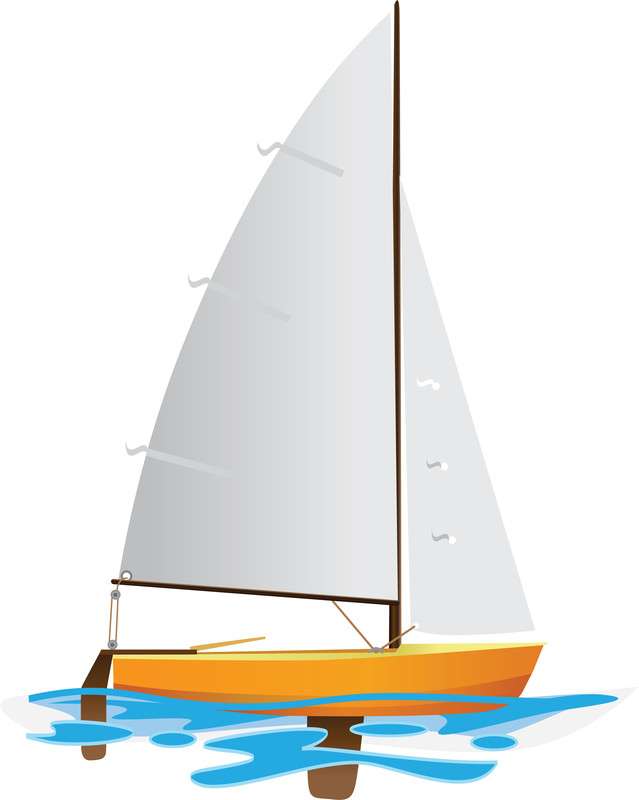We do not believe in the practice of re-conditioning sails by re-resinating. Sails that are old and have distorted shapes will still be old and distorted after the resin wears away in a few seasons. The heat process that is employed tends to shrink boltropes and leech lines compounding the problem. The cost of a new sail is by far a much better value. We can provide professional sail cleaning without using heat processes
Sail Cleaning
There are several methods of cleaning your sails and getting rid of or at least reducing the amount of stains.
Storage

Sunbrela
Care and Cleaning Instructions
Some of the most frequently asked questions about Sunbrella® fabrics concern care and cleaning. The good news is that Sunbrella® is designed to be easy to maintain. By following a few simple care and cleaning steps, the fabric will maintain its good looks for many years.
Important Background
When cleaning Sunbrella® fabrics, it is important to observe the following:

If an awning or boat cover is suitable in size for a washing machine (gentle cycle only) , these steps should be followed:
If you are cleaning Sunbrella® while still on a frame or on a boat, follow these simple steps:
Prepare a special cleaning mixture:
If stubborn stains persist, you can use a diluted chlorine bleach/soap mixture for spot cleaning of mildew, roof run-off and other similar stains.
STAINS
Caution: You must rinse thoroughly with fresh water to remove all solvents, soaps,etc.
| STAIN | Recommended Cleaning Solutions |
|---|---|
| BEER | Liquid detergent, white vinegar |
| BERRY | Liquid detergent/ammonia(3-6% water) |
| BLOOD(DRIED) | Detergent/ammonia(3-6% water) |
| BUTTER | Volatile solvent(acetone) use with extreme caution,rinse well |
| CHARCOAL, PENCIL, MARKS | vacuum solvent(acetone) use with extreme caution, rinse well |
| CATSUP OR MUSTARD | Liquid detergent |
| CHEWING GUM | Volatile solvent(acetone) use with extreme caution,rinse well |
| CHOCOLATE | Liquid detergent, ammonia water |
| COFFEE | Detergent, white vinegar, volatile solvent(acetone) use with extreme caution, rinse well |
| STAIN | Recommended Cleaning Solutions |
|---|---|
| SHOE POLISH (LIQUID) | Volatile solvent(acetone) use with extreme caution, rinse well |
| SHOE POLISH (WAX) | Apply heated iron over towel, volatile solvent (acetone) use with extreme caution, rinse well |
| SUNTAN LOTION | Pine Power® or pine oil detergent |
| TEA | Liquid detergent |
| TOMATO JUICE | Liquid detergent |
| TREE SAP | turpentine, liquid detergent |
| URINE | Liquid detergent, white vinegar |
| VOMIT | detergent, water, white vinegar |
| WATER COLOR | liquid detergent, water, white vinegar |
| STAIN | Recommended Cleaning Solutions |
|---|---|
| MASCARA | Paint Remover, volatile solvent(acetone), detergent, water |
| MILDEW | 1/2 cup of bleach and 1/4 cup natural soap per gallon of water |
| MILK | Liquid detergent |
| NAIL POLISH | Volatile solvent(acetone) use with extreme caution,rinse well |
| OIL | Volatite solvent(acetone) use with extreme caution, rinse well |
| ORANGE DRINK | Liquid detergent, water |
| PAINT(LATEX) WET | Liquid detergent, water |
| PAINT(LATEX) DRIED | Paint, oil or grease remover |
| PAINT (OIL OR LACQUER) | Paint, oil or grease remover |
| STAIN | Recommended Cleaning Solutions |
|---|---|
| COLA | Liquid detergent |
| CRAYON | Paint, oil or grease remover |
| EGG(RAW) | Liquid detergent |
| GRAPE JUICE | Liquid detergent |
| GRAVY | Liquid detergent |
| GREASE(CAR) | Volatile solvent(acetone) use with extreme caution, rinse well |
| INK (Permanent, India, Ballpoint) | Paint remover, volatile solvent(acetone), detergent |
| IRON RUST | Oxalic or citrus acids, water |
| LIPSTICK | Paint, oil or grease remover |
| WAX (CANDLE) | apply heated iron over towel, volatile solvent (acetone) use with extreme caution, rinse well |
| WINE | Liquid detergent / ammonia (3-6% water), white vinegar use with extreme caution, rinse well |


